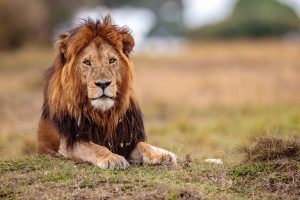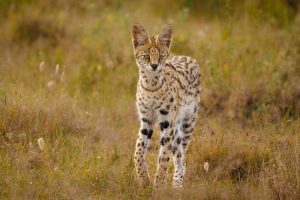The Serengeti is world-famous for its lions, wildebeest, and the Great Migration — but hidden in its sweeping plains and woodlands is another group of incredible animals: the antelopes. Graceful, fast, and highly adapted to survival, these creatures are an essential part of the Serengeti ecosystem.
Let’s take a closer look at the antelope species you might meet on your Serengeti safari.
🦌 1. Thomson’s Gazelle – The Speedy Survivor
Small but mighty, Thomson’s gazelles are among the most common antelopes in the Serengeti. Known for their speed and agility, they can reach up to 80 km/h (50 mph) — a useful trait when avoiding cheetahs.
-
Size: Small and slender
-
Markings: Bold black side stripe, white belly
-
Fun Fact: They often migrate alongside wildebeests and zebras during the Great Migration.
🦓 2. Grant’s Gazelle – The Elegant Lookalike
Often mistaken for its cousin, the Grant’s gazelle is larger and lacks the bold side stripe. These graceful animals prefer open plains and are surprisingly adaptable to dry conditions.
-
Size: Larger than Thomson’s gazelle
-
Markings: Pale tan coat, white rump extends above tail
-
Fun Fact: Males are territorial and fiercely defend their patches of land during mating season.
🐃 3. Eland – The Gentle Giant
The common eland is the largest antelope in Africa, yet it’s remarkably shy and quiet. With its spiral horns and impressive size, the eland adds a majestic presence to the Serengeti landscape.
-
Size: Up to 1,000 kg (2,200 lbs)
-
Horns: Twisted spiral horns in both males and females
-
Fun Fact: Despite their bulk, elands can jump over 2 meters (6.5 feet) high!
🐐 4. Impala – The Graceful Jumper
Impalas are a safari favorite, known for their leaping ability and social behavior. Found near woodlands and riverbanks, they often live in large herds and are a staple prey species for predators like lions and leopards.
-
Size: Medium-sized
-
Markings: Glossy coat, distinctive “M” shape on rear
-
Fun Fact: Can jump up to 10 meters in length and 3 meters high!
🦌 5. Topi – The Speedster with a Style
With their shiny coats and unusual high-set eyes, topis are among the Serengeti’s most unique-looking antelopes. They’re also one of the fastest, capable of sprinting at over 70 km/h (43 mph).
-
Color: Reddish-brown with dark patches on the legs and face
-
Horns: Ringed and slightly lyre-shaped
-
Fun Fact: Males often stand on termite mounds to survey their territory — or show off to females.
🐂 6. Hartebeest – The Long-Faced Runner
Named from the Dutch word meaning “tough ox,” hartebeests are strong and built for endurance. Their long faces and high shoulders give them a distinctive profile, and they’re often seen grazing in open grasslands.
-
Shape: Sloped back, long face
-
Speed: Great long-distance runners
-
Fun Fact: They use zigzag patterns when fleeing predators — confusing and clever!
🦌 7. Steenbok & Dik-Dik – The Tiny Antelopes
These pint-sized antelopes are easy to miss but a delight to spot. Both are incredibly shy and usually seen alone or in pairs near bushes or thickets.
-
Steenbok: Reddish coat, large ears, dainty build
-
Dik-dik: Very small, with a pointed snout and large eyes
-
Fun Fact: Dik-diks mark their territory with tears — using preorbital scent glands below the eyes.
🌍 Why Antelopes Matter
Antelopes are a crucial part of the food chain, serving as prey for predators while also keeping grasslands healthy through grazing. Their varied species showcase the diversity and richness of the Serengeti ecosystem, from vast plains to acacia woodlands.
🧭 Spot Them with Kilipath African Safaris
At Kilipath African Safaris, our expert guides know exactly where to find these incredible creatures — from the iconic eland to the elusive dik-dik. On every game drive, we help you see the Serengeti in full color, beyond the Big 5.
📩 Ready to meet Serengeti’s antelope cast? Let us plan your perfect safari today.





